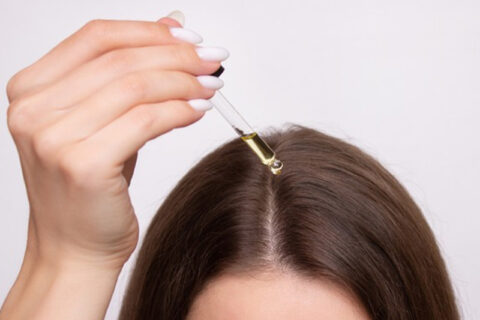How Laser (LLLT) Therapy Works — Myths & Realities for Hair Loss
How Laser (LLLT) Therapy Works — Myths & Realities for Hair Loss
Are you curious about the innovative solutions available for hair loss? Laser (Low-Level Laser Therapy or LLLT) is gaining popularity as a safe and effective treatment to stimulate hair growth. At Freedom Clinic Toronto, we believe in providing our clients with clear, accurate information.
In this post, we explore how LLLT works, debunk common myths, and reveal the truths behind this cutting-edge hair loss therapy.

What is Laser (LLLT) Therapy?
Laser (LLLT) employs low-level lasers or light-emitting diodes (LEDs) that emit specific wavelengths of red or near-infrared light. The devices typically operate at powers ranging from 5 to 500 milliwatts, delivering photons that penetrate the scalp at shallow depths—usually 1 to 3 millimeters—targeting the hair follicles.
This light energy is absorbed primarily by chromophores within the mitochondria, especially cytochrome c oxidase, a key enzyme in the electron transport chain. The absorption leads to an increase in mitochondrial activity, boosting the production of ATP (adenosine triphosphate)—the cell’s energy currency. Unlike high-powered surgical lasers used for cutting or ablation, LLLT’s low energy levels prevent thermal damage, ensuring the treatment is safe, painless, and non-invasive.
By enhancing cellular metabolism and stimulating stem cell activity within hair follicles, LLLT creates a more conducive environment for hair regrowth, reducing follicular miniaturization and promoting the transition from telogen (resting phase) to anagen (growth phase).
⚡ How Does LLLT Promote Hair Growth?
LLLT utilizes specific wavelengths of light ranging from approximately 600 to 900 nanometers, which possess the optimal biocompatibility for penetrating skin and reaching the hair follicle structures. The photon energy is absorbed by chromophores within the mitochondria, leading to a cascade of cellular responses.
This process increases the production of ATP, which provides energy necessary for various cellular functions, including protein synthesis, cell proliferation, and repair. The boost in mitochondrial activity also modulates reactive oxygen species and nitric oxide levels, which play roles in signaling pathways that promote angiogenesis (formation of new blood vessels) and reduce inflammation—both critical for healthy hair follicle function.
As a result, hair follicles that have become miniaturized or dormant due to factors like androgenetic alopecia are reactivated, leading to thicker, stronger regrowth. The treatment prolongs the anagen (growth) phase and helps prevent early entry into the telogen (resting) phase—delaying hair shedding and promoting fuller hair over time. Multiple clinical studies have demonstrated that consistent LLLT usage can significantly increase hair density and scalp coverage.
Myths About Laser (LLLT) for Hair Loss
Myth 1: LLLT Has No Risks or Side Effects
Reality: When used properly, LLLT is safe with minimal side effects. Mild scalp redness may occur temporarily, but serious adverse effects are very rare.
Myth 2: Results Are Instant
Reality: Visible improvements typically take several months and require consistent treatment sessions. Patience and adherence are key.
Myth 3: LLLT Works for Everyone
Reality: While highly effective for many, results depend on factors such as age, degree of hair loss, and how consistently the treatment is used.
Myth 4: Laser Therapy is Only for Hair Loss
Reality: Though primarily used for hair regrowth, LLLT also helps strengthen existing hair and improve scalp health.
✅ The Realities You Should Know
- Clinically Proven: Numerous studies confirm the effectiveness of LLLT for stimulating hair growth.
- Non-Invasive & Painless: Treatments are comfortable, with no downtime needed.
- Easy to Use & Convenient: Many top brands like HairMax, Capillus, and Theradome offer at-home LLLT devices—easy to incorporate into your daily routine for ongoing hair health.
- Supplementary Treatment: LLLT works well alongside other hair loss treatments.
- Personalized Treatment Plans: Our trichologist will develop customized laser therapy recommendations based on your individual hair loss needs to maximize results.
Why Choose At-Home Devices from Freedom Clinic Toronto?
We are knowledgeable and here to support you—offering guidance on trusted at-home LLLT devices from brands like HairMax, Capillus, and Theradome. These user-friendly and effective devices allow you to conveniently maintain and enhance your hair health from home.
The LLLT devices we recommend can be seen here LLLT Devices for Hair Loss. Specifications and pricing are listed on our website, making it easy for you to choose the right device that fits your needs and budget.
We’re always available to answer your questions and assist in selecting the best options for you, ensuring safe, effective, and personalized hair loss treatment at your convenience.
Ready to Fight Hair Loss with Laser Therapy?
Contact Freedom Clinic Toronto today for a consultation. We’ll help you understand how to incorporate safe, scientifically-supported laser therapy into your hair regrowth routine—right from the comfort of your home!


